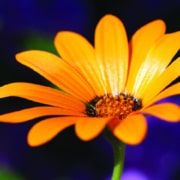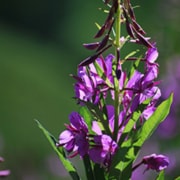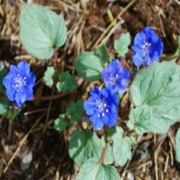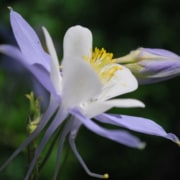Wildflower Seed Planting Tips
Where to Plant Your Wildflower Seeds
Select a site with good drainage and full sun, removing weeds and choking grasses.
Remove weeds and grasses by pulling, tilling, or smothering with newspaper or cardboard. Loosen the soil if hard-packed, but do not till more than 2-3 inches deep. Avoid deep tilling. Try to only disturb the top 2-3 inches of soil. There are untold numbers of dormant weed seeds in the top layers of soil just waiting to germinate with a little exposure! Allow the weed seeds that have been exposed, to germinate, then hoe or hand pull them. Leave them to dry out on the surface of the soil, to become an amendment for your soil. Do not allow any weeds to seed out, pull or destroy all before they go to seed. If you have time, repeat the process, by allowing another round of weeds to sprout up for subsequent destruction before planting your wildflower seedbed. If you keep on top of the weed issue, you will eventually reduce the number of weed seeds that are left to germinate and your wildflowers will grow and fill in without competition. Use of herbicides is strongly discouraged and should only be used if absolutely necessary. Please carefully follow label instructions.
Rake the area smooth, breaking up any large soil clumps. Fertilizing at this stage is not necessary and only encourages weed growth and may produce extensive leaf growth at the expense of blooms. Now you are ready to scatter your seeds!
What Quantity of Wildflower Seeds to Plant
Follow the seeding rate on the package for that mix or species. (See more on this below.) To avoid ending up with all the seeds at one end of the area, divide the seeds into two or more batches. Scatter the seeds of each batch over the entire area. Gently rake over the newly scattered seeds to just snuggle them into the top layer of soil. Press the soil down using your hands or a wide board.
For seeding rate, a good rule of thumb is to plant 1 oz. of seed mix per 100-125 sq. feet (11.6 sq meters). A 4 oz. bag of seed will cover 375-400 sq. feet, and our 8 oz. bag will cover 750-800 sq. feet. Our individual species bags have enough seed, for that species, to cover an area of about 10 sq. feet or an area about 3’x3′. If enough moisture is present, you can get a good stand of wildflowers at the rate of 1 lb. per 2,000 sq. feet. For really large areas, plan on up to 20 lbs. per acre if drilled, or 50-60 lbs. per acre broadcast.
These seeding rates are for our wildflower mixes only and do not apply to individual species which vary widely in their seeding rates. The product page for each species should list the seeding rate for that species. Please feel free to give us a call or send us an email if you have questions.
Sowing Your Seeds
Scatter the wildflower seeds evenly over the entire area. Make sure to not over-seed as the plants will be crowded and not strong and healthy. Follow the seeding rate on the package for that mix or species. To avoid ending up with all the seeds at one end of the area, divide the seeds into two or more batches. Scatter the seeds of each batch over the entire area. Gently rake over the newly scattered seeds to just snuggle them into the top layer of soil. Cover the seed only to a depth of 1/8 inch. Press the soil down using your hands or a wide board. Use only a thin layer of mulch to hold in moisture. Wildflower seeds often need light to germinate as well as moisture.
For large areas and a better distribution of a mix with a range of seed sizes, you can mix the seeds with clean sand and use a mechanical spreader. Divide the mix in half and spread each half of the mix over the entire area. This helps to avoid using up all the seeds before you reach the far end of your area.
For a natural meadow-effect use only non-sod-forming grasses to mix with your wildflower seeds. Grasses that form a sod or a mat, will choke out other plants. Use clumping grass species such as blue gramma, sheep fescue, or hard fescue in equal parts with flower seed. These are non-competitive and serve to control erosion. For the southeastern US, use non-rhizomatous Tall Fescue.
Gently soak the area and maintain consistent moisture for 4 to 6 weeks. If irrigation is not practical, try to take advantage of early spring moisture to aid with germination. In more temperate climates, take advantage of the cooler winter rainy season. In dry climates or drought conditions, water may be required after germination, tapering off as the plants become well established.
When to Plant Your Wildflowers
Moisture MUST be present for germination. Wildflowers can be planted either in the early Spring, when most people are planting their garden or in the Fall (dormant seeding) when Mother Nature does her planting.
For Spring planting, sow one month prior to the date of last hard freeze and gently water the area for the first month or so (unless Spring rains do it for you) to enhance germination. The freeze-thaw cycles help to break the dormancy of some species for better germination when the temperatures/light and moisture are correct.
For late Fall (dormant) planting, simply scatter the seed on top of the soil and rake the seed into the soil when freezing nighttime temperatures are consistent, lightly mulch the area, water once to get good soil contact and forget. The seeds will remain dormant through the winter and germinate the following spring when the soil warms and the days are longer.
In more temperate zones, sowing at other times of the year can be successful. Plan to sow seeds for germination during the cool, moist time of year to allow the plants to become well established before the hot, dry season.
Maintenance and What to Expect
After the wildflowers have germinated, it can be very difficult to distinguish flowers from weeds. For this reason, it’s best to wait until you recognize the plants or recognizable blooms appear, then simply pull up the unwanted weeds. This may mean waiting 8-10 weeks to be able to eliminate all weeds.
The first season after planting your wildflower mix, you should see the brilliant colors of the annuals, since they are the species that will bloom the first season. They will reseed themselves, but will not be as abundant the following year.
The perennial species in the mix will take the first year or two to expand their root systems and become well established. You should see a few blooms the first season, but many more beginning in the second or third years.
Once established, taking care of your wildflower garden is a must. Take time to evaluate your site. Do some of the species do better in one area rather than another? Purchase some of those seeds to augment the more favorable spots for that species for a stronger showing.
In the early spring of the second year sow some All Annuals Mix over the site to continue a strong showing of the annual species that were so brilliant the first season.






